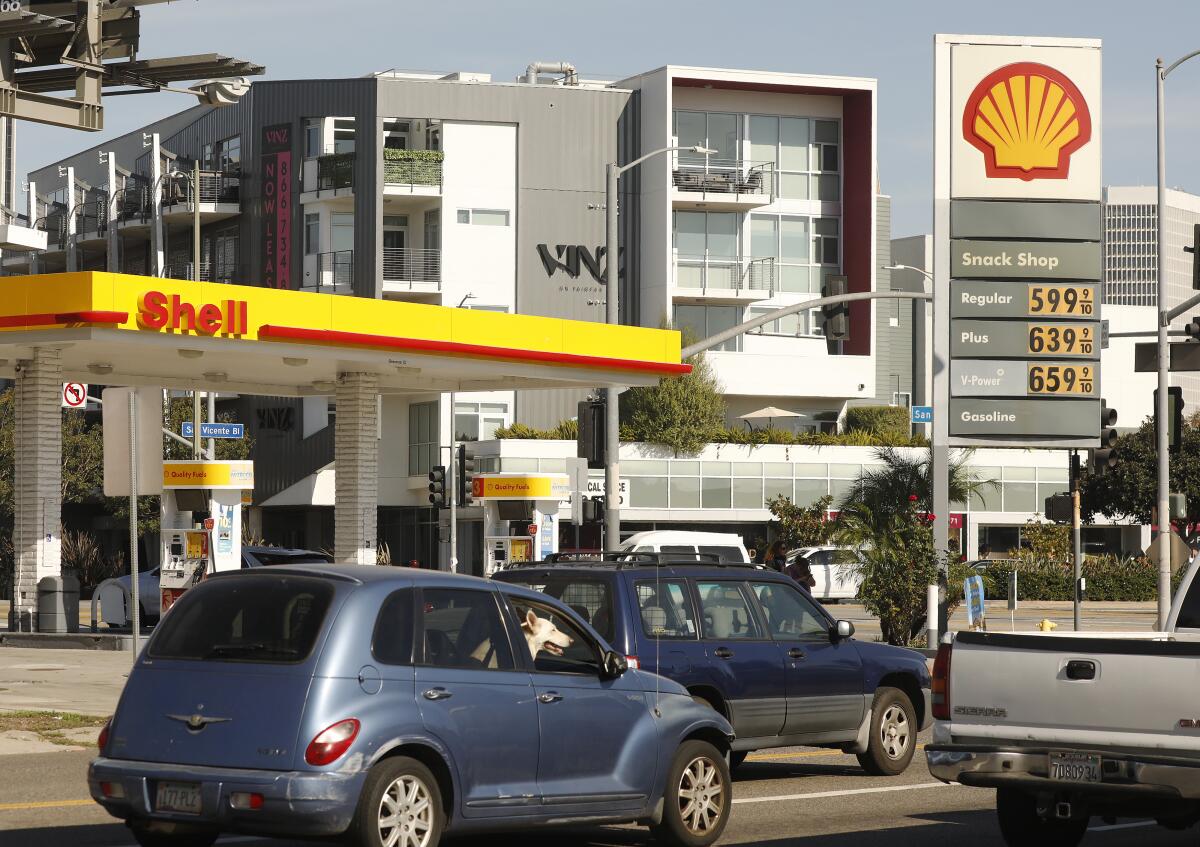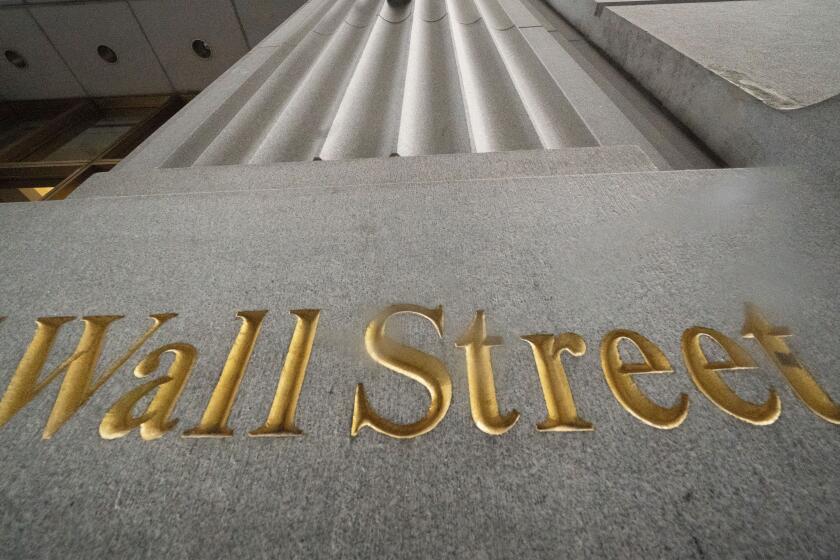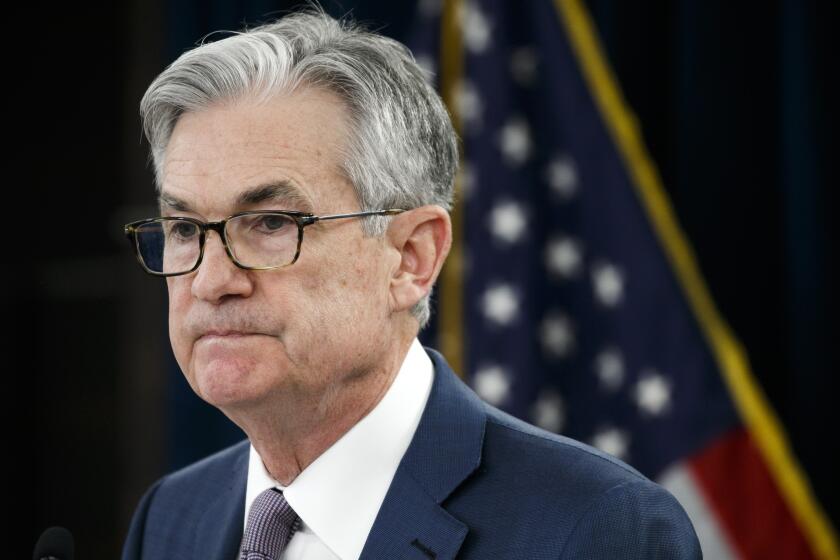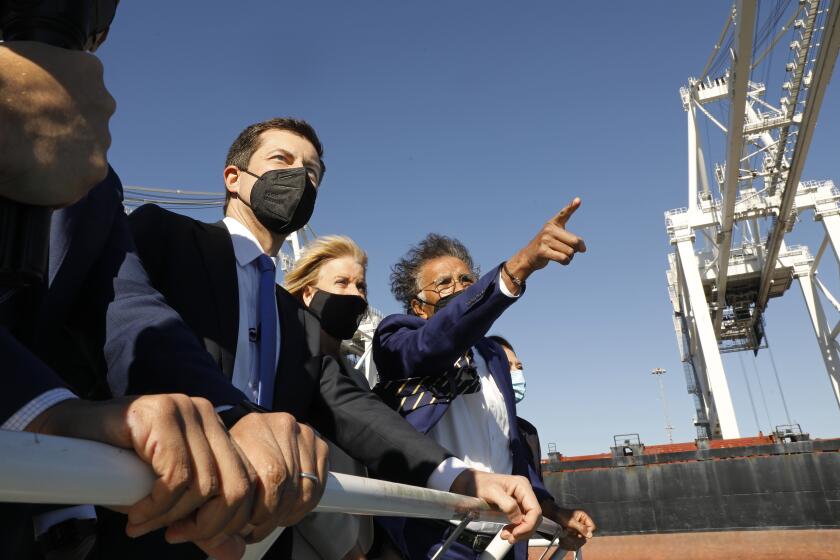A key inflation gauge rose 5.8% in 2021, the largest increase since 1982

- Share via
WASHINGTON — A measure of prices that is closely tracked by the Federal Reserve rose 5.8% last year, the sharpest increase since 1982, as brisk consumer spending collided with snarled supply chains to raise the costs of food, furniture, appliances and other goods.
The report Friday from the Commerce Department also said that consumer spending fell 0.6% in December. A wave of Omicron coronavirus cases discouraged many Americans from traveling, eating out or visiting theaters and other entertainment venues. At the same time, incomes rose 0.3% last month, providing fuel for future spending.
Stubbornly high inflation has hammered household budgets, wiped out last year’s healthy wage gains and posed a severe political challenge to President Biden and Democrats in Congress. It also led the Federal Reserve to signal Wednesday that it plans to raise interest rates multiple times this year beginning in March to try to get accelerating prices under control.
Chair Jerome H. Powell also made clear that the Fed will move to shrink its huge $8.9 trillion of bond holdings soon after it starts raising rates, another step that will likely tighten credit, slow spending and potentially weaken the economy.
Speaking at a news conference Wednesday, Powell acknowledged that inflation has gotten “slightly worse” in the past month. He cautioned that higher prices “have now spread to a broader range of goods and services,” after initially affecting sectors of the economy, like factory-made products for homes, that were most disrupted by the pandemic.
Wall Street faces biggest setback since its collapse when the pandemic first struck.
Powell also said the Fed is increasingly focused on the question of whether rising wages are acting as a primary driver of inflation, by forcing companies to charge more to cover their higher labor costs. Such a “wage-price spiral,” which the United States hasn’t experienced since the 1970s, can make inflation difficult to cool.
The inflation figure that the government reported Friday is known as the personal consumption expenditures (PCE) index. Though the consumer price index is a better-known barometer, the Fed tends to track the PCE in setting its interest rate policies. The PCE index tracks actual purchases consumers make each month, while the CPI follows a fixed market basket of goods.
Earlier this month, the government said the CPI jumped 7% last year, also the fastest pace in nearly four decades.
Prices have risen in the past year as Americans have spent freely, helped by large stimulus checks in the spring and higher pay. Spending on autos, electronics and other goods jumped 12% in 2021, the government reported Wednesday, the biggest increase since 1946.
The Federal Reserve struck a hawkish tone as it signaled its readiness to raise interest rates in March.
At the same time, bottlenecked supply chains and shortages of components, notably semiconductors, have left many retailers and auto dealers with fewer cars and other goods to sell. Powell has blamed mainly ongoing “supply and demand imbalances” for driving inflation.
On Thursday, McDonald’s said that, while sales last year grew at a healthy pace, higher costs for food and paper products and the need to raise pay to attract and keep workers eroded profits, even after it raised prices 6% last year.
Likewise, Procter & Gamble said last week that it plans to raise prices for laundry products such as Tide, Gain and Downy and for personal care products. The company anticipates price increases for chemicals and other commodities this year.
At the Long Beach port, Transportation Secretary Pete Buttigieg praised local efforts to improve supply-chain issues. But a fresh challenge looms.
Higher prices may be weighing on some Americans’ willingness to spend. Still, last month’s drop in consumer spending is likely to be temporary. Americans are already showing signs of heading back out to restaurants and movie theaters as the huge jump in Omicron infections has started to decline.
JPMorgan Chase says spending on its credit cards for hotels, travel, and entertainment venues has rebounded this month, after falling in December. Spending has risen more in states where COVID-19 cases have come down the most.
More to Read
Inside the business of entertainment
The Wide Shot brings you news, analysis and insights on everything from streaming wars to production — and what it all means for the future.
You may occasionally receive promotional content from the Los Angeles Times.












